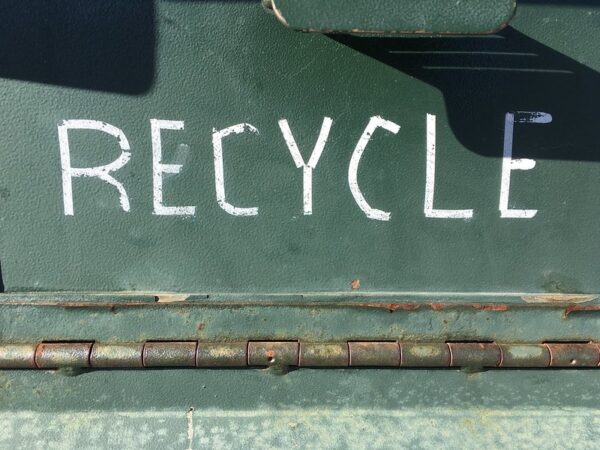- Different MRFs in different areas accept different things. Always check locally on your town or city’s website for the most accurate info.
- The recycling symbol (triangle of 3 chasing arrows) does NOT mean the item is recyclable – so misleading, I know. The number inside the arrows indicates the type of material the item is made from and that’s really it. Don’t spend time looking for a recycling symbol.
- An item’s recyclability depends on its separability into different components. A single item made of mixed materials is rarely recyclable.
- The cleaner, the better, but balance that with how much water you’re using to clean it. Items don’t need to be 100% clean, but do your best. Soak containers with greasy or thick food stains overnight to minimize the water needed for cleaning.
- Dry your hard plastic items after washing them! Single stream recycling is “great” for the consumer since it’s easier, but it actually increases the likelihood of contamination dramatically. Just leave hard plastics in the drying rack or on the counter for a few hours before tossing them in the recycling bin. Try to keep paper materials clean and dry.
- Break down your cardboard boxes to allow your sanitation workers to safely collect more material in one truckload. Intact boxes = more empty space in the truck = more trucks and/or loads required = more CO2 emissions and more tax $$ spent (depending on your area). Remove as much plastic tape as possible.
- Plastic films and wiry pieces of metal can jam up sorting machinery. Never put plastic bags in curbside recycling, which also means don’t collect your recycling in a plastic bag, then put it in the bin.
- Light-weight and small items are more likely to fly off the belts or slip through cracks. If it’s smaller than a credit card, toss it.
- Some facilities use light to sort items, making black and other dark plastics impossible to sort correctly. Try to find another use for these items. Otherwise, they need to be thrown away.
- Remember! It’s always best to reduce what you use first and reuse/repair as much as possible before attempting to recycle.
Check out the Little Book about Recycling by the Aware Animals team for more recycling knowledge. I do want to point out there are some conflicting points from what I’ve said above and what I describe in Keep, Recycle, Toss (or Compost!). The book says:
- Materials need to have a recycling symbol on them in order to be recyclable – according to Cambridge’s Recycling Director, Michael Orr, this is not true for Cambridge and I believe most of MA.
- Pizza boxes are not recyclable – this is not the case for MA. They need to be clean – meaning no actual food stuck to them – in order to be recyclable. Grease is ok!
This is an unintentional but fantastic example of all the variety and uncertainty within the recycling industry across the globe. I believe the authors of the book state those two points not because they are malicious or uninformed, but because they intend to serve a broader audience.

